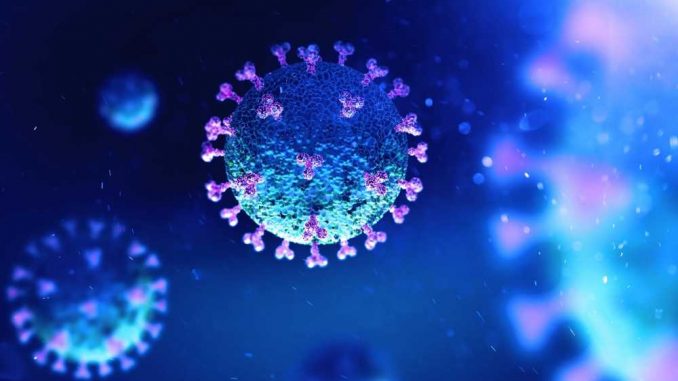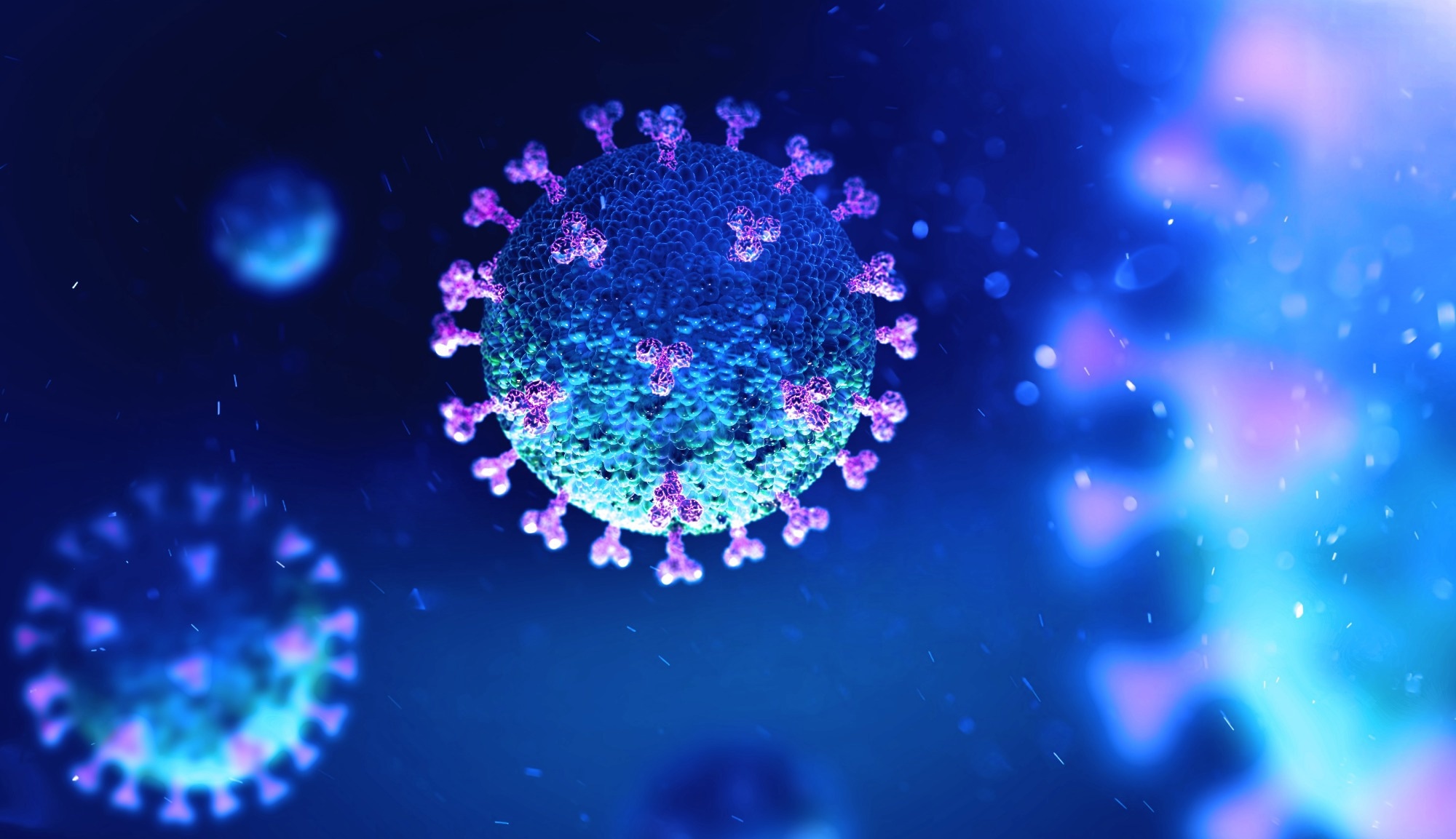
In a recent study posted to the medRxiv* preprint server, researchers assessed the severe acute respiratory syndrome coronavirus 2 (SARS-CoV-2) variants of concern (VOCs) transmission dynamics and neutralization by vaccine-induced antibodies and monoclonal antibodies (mAbs).

Background
The continual emergence of SARS-CoV-2 VOCs across the globe has increased health concerns and warrants the need for increased coronavirus disease 2019 (COVID-19) vaccination efforts and the development of improved anti-SARS-CoV-2 therapeutic agents. Comparative assessments of humoral immune responses to and neutralization of SARS-CoV-2 VOCs could aid in widening the therapeutic landscape of COVID-19.
About the study
In the present study, researchers used their previously developed validated live virus neutralization assay for evaluating serum samples of individuals vaccinated with COVID-19 vaccines (such as messenger ribonucleic acid (mRNA)-1273, Ad26.COV2.S or BNT162b2) or who had a prior history of SARS-CoV-2 infections with the ancestral strain or Omicron subvariants. In addition, SARS-CoV-2 variant neutralization by two-dose vaccine-induced antibodies was assessed.
SARS-CoV-2 VOCs were isolated from nasopharyngeal swab samples of COVID-19 patients by quantitative reverse transcription-polymerase chain reaction (RT-qPCR) analysis and all VOC isolates were phylogenetically analyzed with the SARS-CoV-2 ancestral strains, namely, SARS-CoV-2/WA-1 and SARS-CoV-2/Wuhan-Hu-1 strains as reference.
Plaque reduction neutralization titer (PRNT) analyses were performed and the neutralization differential (ND) values were calculated for evaluating vaccine-induced SARS-CoV-2 VOC neutralization potency from sera of eight and seven individuals doubly vaccinated with mRNA-1273 and BNT162b2, respectively, and COVID-19 convalescents (n=13). Further, the effects of booster vaccinations on SARS-CoV-2 VOC neutralization were evaluated.
Omicron detected in Seattle using the SARS-CoV-2 spike (S)-gene target failure (SGTF) PCR assays was sequenced by whole genome sequencing (WGS) analysis. Infection analyses and multi-step viral growth analysis were performed using HBEC (primary human bronchial epithelial cells) and HSAEC (human primary small airway epithelial cells) to assess the Omicron BA.1 growth properties compared to the SARS-CoV-2/WA-1 strain.
Further, mAb screening was performed to identify mAbs with potential efficacy against Omicron and the mAbs were assessed for S RBD-ACE2 binding by enzyme-linked immunosorbent assays (ELISA). Further, focus reduction neutralization titer (FRNT) and surrogate virus neutralization test assays were performed for determining Omicron BA.1 and BA.2 neutralization by RBD-binding mAbs using angiotensin-converting enzyme 2 (ACE2)- and transmembrane protease serine 2 (TMPRSS2)-expressing-A549 cells.
Results
Neutralization analyses across all VOCs showed that a prime-boost regimen provided immune protection against Omicron BA.1 (ND for prime vaccination vs booster vaccination was 20 vs 3.5) and the booster doses majorly enhanced Omicron BA.1 neutralization over ancestral strain neutralization enhancement (ND 54 vs 9.4).
The booster dose increased Omicron BA.1 neutralization by 50-fold compared to prime vaccination doses. Convalescence >5 months did not effectively protect against Omicron BA.1, but COVID-19 vaccination following SARS-CoV-2 infection and recovery provided strong SARS-CoV-2 neutralization except Omicron BA.1.
There were no significant differences between the BNT162b2 and mRNA-1273 vaccines in SARS-CoV-2 VOC neutralization. Contrastingly, convalescent sera of unvaccinated individuals exhibited significantly lower cross-variant neutralization titers than of the COVID-19 vaccines (ND range for vaccinated COVID-19 convalescents was between 2.8 and 3.5).
The Seattle Omicron VOC was similar to Omicron BA.1; however, S1265I mutation and an amino acid (aa) 105 to 107 deletion in non-structural protein 3 and 6, respectively, were detected in the Seattle Omicron variant. In addition, the Seattle Omicron contained R346K mutation and three sites of aa deletions in regions coding for SARS-CoV-2 (aa 68 to 69 site, aa 142 to 144 site, and aa 211 site) and the SARS-CoV-nucleocapsid (NP) protein encoded aa 30 to 47deletion. In comparison to the Seattle Omicron BA.1, Omicron BA.2 displayed additional S protein mutations with 20 aa differences between BA.1 S and Omicron BA.2 S.
Infection and viral growth analyses showed remarkably slower multiplication and a significantly smaller peak for BA.1 than the SARS-CoV-2/WA-1 strain but showed more growth among HSAEC than HBEC. Four mAbs were identified that neutralized the ancestral strain and the Delta VOC, of which mAb 297 effectively neutralized BA.1 and BA.2 in addition to the ancestral strain and Delta at levels comparable to ancestral strain neutralization by the REGN10987/10933 mAb cocktail.
Overall, the study findings showed that the immune-evasive Omicron VOC produced blunted humoral neutralizing immune responses in comparison to the ancestral strain and underpin the administration of booster vaccinations and mAbs for enhanced immune protection against SARS-CoV-2.
*Important notice
medRxiv publishes preliminary scientific reports that are not peer-reviewed and, therefore, should not be regarded as conclusive, guide clinical practice/health-related behavior, or treated as established information.
- Linhui Hao et al. (2022). Dynamics of SARS-CoV-2 VOC neutralization and novel mAb reveal protection against Omicron. medRxiv. doi: https://doi.org/10.1101/2022.08.12.22278720 https://www.medrxiv.org/content/10.1101/2022.08.12.22278720v1
Posted in: Medical Science News | Medical Research News | Disease/Infection News
Tags: ACE2, Amino Acid, Angiotensin, Angiotensin-Converting Enzyme 2, Antibodies, Assay, Coronavirus, Coronavirus Disease COVID-19, covid-19, Efficacy, ELISA, Enzyme, Gene, Genome, Mutation, Nasopharyngeal, Omicron, Polymerase, Polymerase Chain Reaction, Protein, Respiratory, Ribonucleic Acid, SARS, SARS-CoV-2, Serine, Severe Acute Respiratory, Severe Acute Respiratory Syndrome, Structural Protein, Syndrome, Transcription, Vaccine, Virus, Whole Genome Sequencing

Written by
Pooja Toshniwal Paharia
Dr. based clinical-radiological diagnosis and management of oral lesions and conditions and associated maxillofacial disorders.
Source: Read Full Article